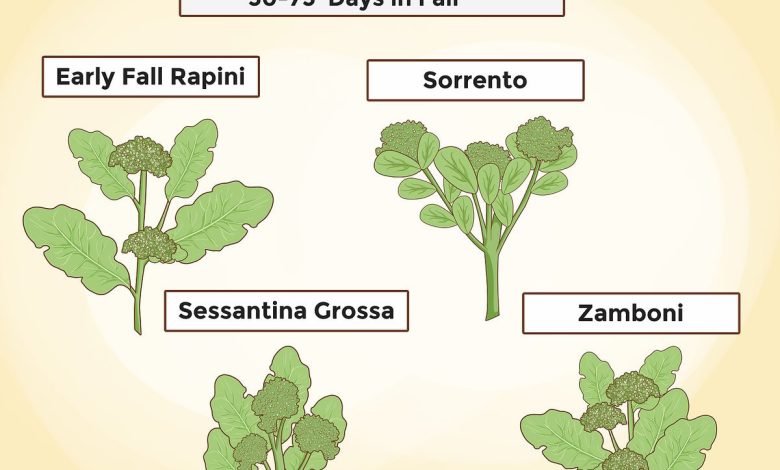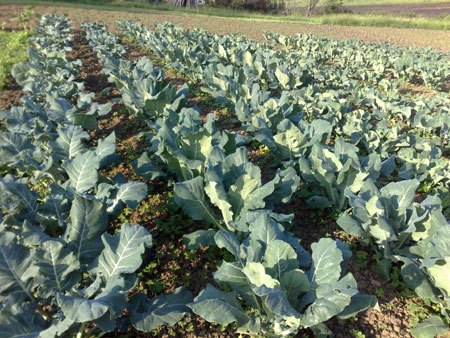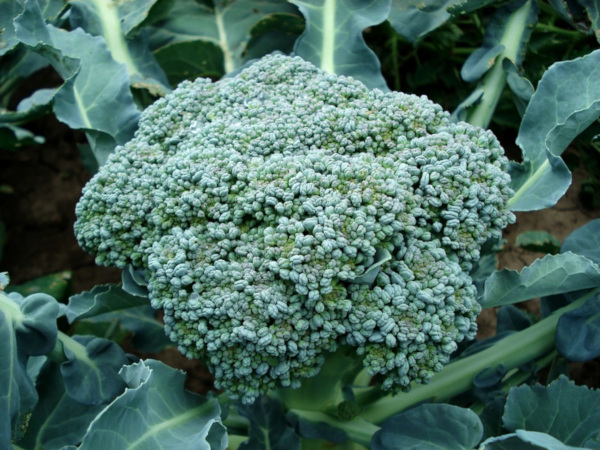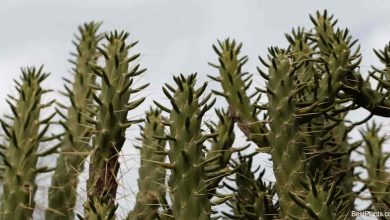Broccoli: Cultivation and Management of Broccoli in the garden step by step

Broccoli, broccoli or broccoli (Brassica oleracea italica), is a plant of the brassicaceae or cruciferous family . It belongs to the same species as cabbage, cauliflower, Brussels sprouts, or Chinese broccoli, but they are different varieties. This plant has a large number of edible green flower heads, arranged in the form of a tree. It is usually prepared boiled or steamed, but it can be consumed raw, in fact, it has become a very popular raw vegetable as an appetizer. It is high in vitamin C, vitamin E, and soluble dietary fiber.
It is considered one of the vegetables with the highest nutritional value, it has antioxidant and purifying benefits, strengthens the defenses and is preventive against cancer, although it is not recommended in large quantities for people suffering from hypothyroidism. Let’s see how we can grow it in our garden.
How to successfully grow broccoli in the garden
temperatures
It is a cool climate crop, so it thrives worse during hot summers, therefore, it develops mainly during the autumn and winter seasons. It is necessary that the temperatures during the growth phase oscillate between 20 and 24ºC; In order to start the floral induction phase, it needs between 10 and 15ºC for several hours of the day. They do not usually freeze with temperatures below 0º C, as long as these do not last too long. Broccoli needs full sun to grow well.
I usually
Broccoli cultivation prefers soils with a tendency to acidity, with an optimal pH between 6.5 and 7. It requires soils of medium texture, it does not tolerate excessive salinity, both in the soil and in the irrigation water.
They need the substrate to be well fertilized, as it is demanding in terms of potassium (K) and nitrogen (N), so it would be convenient to provide compost, since synthetic fertilizers are not allowed in organic farming. Like spinach, broccoli likes the soil to be constantly moist, but not waterlogged.
A mulch or permanent plant cover will help maintain the necessary humidity in addition to providing a plus of organic matter.
Broccoli Crop Management
When to sow or plant Broccoli
Broccoli is sown in a nursery or the plant is bought and transplanted. If we opt for seedbed sowing, normally outdoors, from March to June and from August to September. The seed should be lightly covered with a layer of soil of 1-1.5 cm and watered frequently to achieve a developed plant in about 45-55 days.
When the plants reach between 10 and 15cm and about four leaves, they are transplanted outdoors in a row planting frame, spaced about 60-75cm apart, and 45cm between plants. If you are going to plant in a pot (recommended a capacity of no less than 15 liters) put only one plant per pot.
Given its tall size, it is advisable to underpin the plants, that is, add soil to the base of the stem to prevent it from falling over.

How and how much to water broccoli
Broccoli requires practically constant humidity, so watering must be abundant and regular, especially during the growth phase, although without flooding the soil. In the floral induction phase, it is convenient that the soil is without excessive humidity, but it is in a temperate state.
When they have formed the inflorescence, it is not advisable to irrigate by sprinkling (above), as they could present rot or fungi, which is why the ideal irrigation system for this crop is drip irrigation.
Harvest the broccoli
Broccoli should be harvested with the number of outer leaves necessary for its protection (6-8 leaves). The harvest begins when the length of the stem reaches 5 or 6 cm, later they are harvested as the sprouts of lateral inflorescences are produced.
Good quality broccoli should have closed, shiny, dark green inflorescences, compact (firm to the pressure of the hand) and a well-cut stem of the required length.
For harvesting, the central head is cut off while the shoots are still stiff. After harvesting the central head, they are covered with a little mulch with compost to favor the formation of more secondary shoots, since two or three more can be removed.

Intercropping with broccoli
Broccoli pairs well with potatoes and onions; In addition, if we plant mint or rosemary nearby, it will help to drive away parasites. We could also plant lettuce or spinach, which by having shorter vegetative cycles, we will be able to take advantage of the space and they will not compete for it.
Curiosities about broccoli
- 200 grams of broccoli provide three times the daily needs of vitamin C.
- Broccoli provides significant amounts of folic acid, essential for growing children and pregnant women.
- Broccoli is the vegetable with the highest nutritional value per unit of edible weight.
- The heaviest recorded broccoli (13,117 kilos) was grown in England in 1964.
- Its intense smell is due to its richness in sulfur nutrients.
- The United States is the world’s largest producer of broccoli.
I hope you found the article interesting and that you send us some photos of your broccoli soon!




![Photo of Plant an Almond Tree Step by Step: [Care, Dates, Irrigation and Pruning]](https://www.complete-gardening.com/wp-content/uploads/2022/08/plant-an-almond-tree-step-by-step-care-dates-irrigation-and-pruning-390x220.jpg)